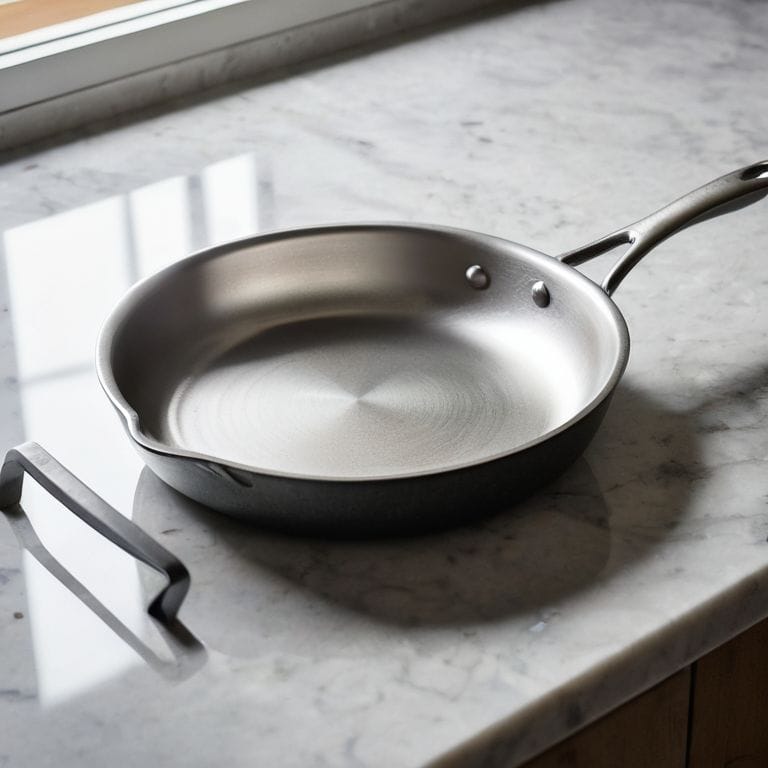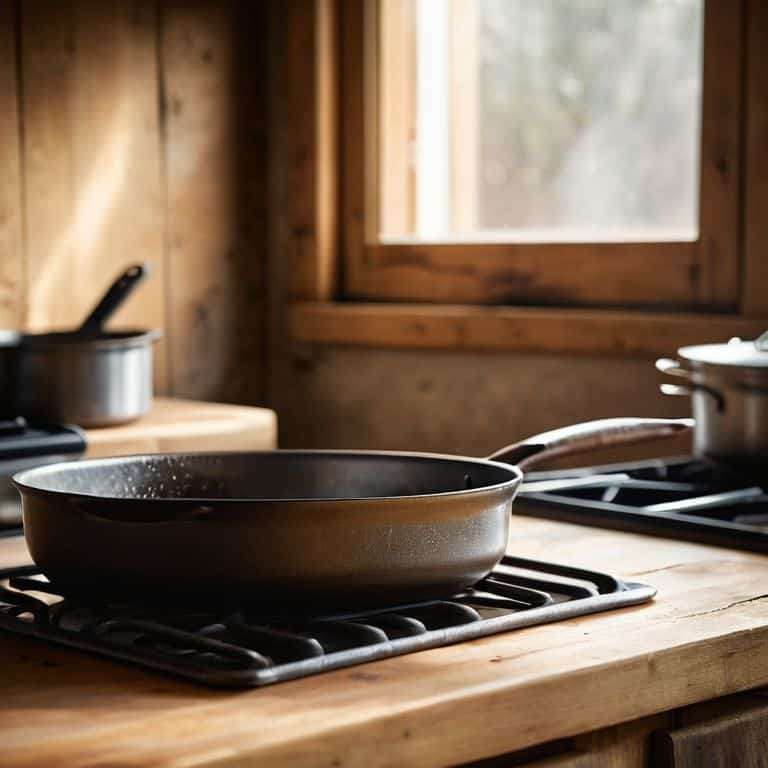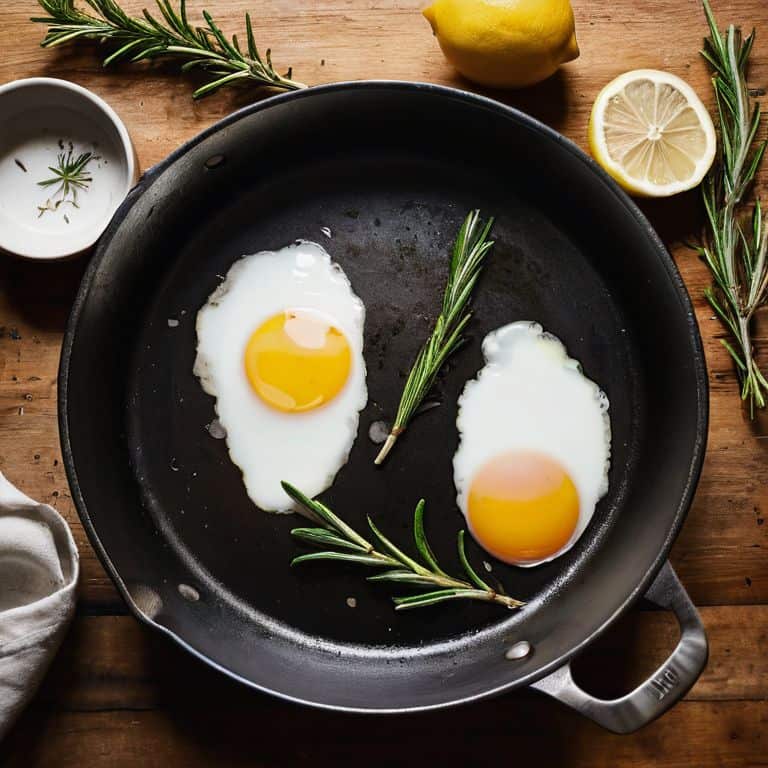I still remember the first time I encountered a carbon steel pan in a professional kitchen. The chef swore by its heat distribution and durability, but I was skeptical. What is a carbon steel pan, really? Is it just a fancy marketing term, or does it truly live up to its reputation? As someone who’s spent years testing and reviewing kitchen gadgets, I’ve seen my fair share of hype. But I’ve also learned that sometimes, the simplest tools can be the most effective. So, I decided to put carbon steel pans to the test, to separate fact from fiction and give you the lowdown on what is a carbon steel pan.
In this article, I’ll cut through the marketing noise and give you a no-nonsense review of carbon steel pans. I’ll share my hands-on experience with these pans, including their performance, durability, and value. If you’re wondering whether a carbon steel pan is right for you, you’re in the right place. I’ll provide you with the information you need to make an informed decision, based on my own testing and research. My goal is to help you buy with confidence, without breaking the bank or falling for exaggerated claims. So, let’s dive in and explore the world of carbon steel pans, shall we?
Table of Contents
What Is a Carbon Steel Pan

As a kitchen product tester, I’ve always been fascinated by the benefits of carbon steel cookware. Carbon steel pans, in particular, have gained popularity in recent years due to their exceptional heat conductivity and durability. But what makes them tick? Essentially, a carbon steel pan is a type of cookware made from a mixture of carbon and steel, which provides a unique combination of strength, lightness, and heat responsiveness.
When comparing carbon steel vs stainless steel pans, it’s clear that carbon steel pans have a distinct advantage when it comes to heat distribution. They can achieve a scorching hot temperature in a matter of minutes, making them ideal for high-heat cooking techniques like searing and frying. However, this also means that carbon steel pans require special care, including seasoning a carbon steel wok to prevent rust and maintain non-stick properties.
In my experience, the key to getting the most out of a carbon steel pan lies in understanding its unique characteristics and carbon steel pan cooking techniques. This includes using the right amount of oil, avoiding abrasive cleaners, and storing the pan in a dry place. By following these simple guidelines and investing in a high-quality pan from one of the best carbon steel pan brands, home cooks can enjoy a lifetime of delicious meals and hassle-free cooking.
Benefits of Carbon Steel Cookware
As I dug into the world of carbon steel cookware, I was excited to uncover the benefits that have loyalists swearing by these pans. From my research and testing, it’s clear that carbon steel cookware offers a unique combination of heat conductivity and durability.
In my kitchen lab, I’ve found that carbon steel pans excel at even heat distribution, allowing for a perfect sear on delicate foods like fish or eggs. This, combined with their rugged construction, makes them a great choice for home cooks who want a reliable workhorse in their kitchen.
Carbon Steel vs Stainless Steel Pans
When it comes to choosing between carbon steel and stainless steel pans, the decision can be overwhelming. I’ve spent countless hours in my kitchen lab testing both types, and I’ve found that durability is a major factor to consider. Carbon steel pans, when seasoned properly, can withstand high heat and metal utensils, making them a great choice for heavy-duty cooking.
In comparison, stainless steel pans are often more versatile, as they can be used at high heat, with metal utensils, and even in the oven. However, they can be more prone to scratches and may not retain heat as well as carbon steel pans.
Mastering Carbon Steel Pans

To get the most out of your carbon steel pan, it’s essential to understand the benefits of carbon steel cookware and how to harness them. One of the key advantages of carbon steel pans is their heat responsiveness, allowing for precise temperature control. This makes them ideal for searing meat or cooking delicate fish. By mastering the art of heat control, you can unlock the full potential of your carbon steel pan and achieve restaurant-quality results in the comfort of your own kitchen.
When it comes to cooking techniques, carbon steel pans offer a lot of versatility. From stir-frying to braising, these pans can handle a wide range of cooking methods. To get started, try experimenting with different carbon steel pan cooking techniques, such as using a small amount of oil to prevent sticking or cooking at high heat to achieve a perfect sear. With practice, you’ll become more confident in your ability to cook a variety of dishes using your carbon steel pan.
As you become more comfortable with your carbon steel pan, you’ll want to make sure you’re taking proper care of it. This includes seasoning a carbon steel wok or pan to prevent rust and maintain its non-stick properties. By following a few simple carbon steel pan safety precautions, such as avoiding abrasive cleaners and never putting your pan in the dishwasher, you can ensure your pan remains in good condition for years to come.
Best Carbon Steel Pan Brands and Safety
When it comes to choosing a carbon steel pan, the brand can make a significant difference in terms of quality and performance. I’ve found that reputable manufacturers like Mauviel and Matfer offer high-quality options that are worth considering. These brands have a long history of producing durable and reliable cookware that can withstand the rigors of frequent use.
In terms of safety, it’s essential to look for pans that are PFOA-free, ensuring that your cookware is non-toxic and safe for cooking. Additionally, a well-seasoned carbon steel pan can be a safe and healthy choice for cooking, as it prevents the transfer of harmful chemicals into your food.
Seasoning and Cleaning Techniques
To get the most out of your carbon steel pan, proper maintenance is crucial. This includes seasoning, which creates a non-stick surface, and cleaning, which prevents the buildup of residue. I’ve found that using a gentle cleanser and avoiding abrasive scrubbers is essential to maintain the pan’s integrity.
After each use, I employ a gentle cleaning routine, wiping out any excess food particles and applying a small amount of oil to the surface. This not only prevents rust but also reinforces the seasoning, ensuring the pan remains in great condition for a long time.
5 Essential Tips to Get You Started with Carbon Steel Pans

- Choose the right thickness: A thicker carbon steel pan retains heat better, but is heavier and more expensive, while a thinner one is lighter and cheaper, but may warp easily
- Select a pan with a comfortable handle: Ergonomics matter, especially when you’re cooking for extended periods, so opt for a handle that fits your hand and cooking style
- Understand the difference between raw and pre-seasoned pans: Raw carbon steel pans require seasoning before use, while pre-seasoned ones are ready to go, but may need touch-ups over time
- Don’t be afraid to get a little rough: Carbon steel pans can withstand metal utensils and high heat, but be gentle when cleaning to avoid stripping the seasoning
- Consider the size and shape for your cooking needs: From small omelette pans to large skillets, choose a carbon steel pan that fits your cooking style and the number of people you’re serving
Key Takeaways for Choosing the Right Carbon Steel Pan
I’ve found that carbon steel pans offer exceptional heat conductivity and versatility, but their performance highly depends on proper seasoning and maintenance
Through my testing, I’ve concluded that while carbon steel pans have several benefits over stainless steel pans, including lighter weight and better heat distribution, they require more upkeep and care
My research and kitchen experiments suggest that investing in a high-quality carbon steel pan from a reputable brand can be a worthwhile investment for home cooks, offering a ‘buy it for life’ value proposition when considering the cost-per-use metric
The Essence of Carbon Steel
A carbon steel pan is not just a piece of cookware, it’s a trusted companion in the kitchen – one that, when properly cared for, can become a lifelong friend that sears, sautés, and cooks with a depth of flavor that’s hard to match with other materials.
Katherine "Kate" Reed
Conclusion: Putting it all Together
As I conclude my in-depth exploration of carbon steel pans, I want to emphasize the importance of understanding the benefits and drawbacks of this cookware. From their exceptional heat conductivity to their requirement for regular seasoning, it’s clear that carbon steel pans are a great choice for those willing to invest time and effort into mastering them. My testing has shown that, when used correctly, carbon steel pans can produce outstanding results, whether you’re searing meat or cooking delicate vegetables. By choosing the right brand, following proper seasoning and cleaning techniques, and being mindful of safety considerations, you can unlock the full potential of your carbon steel pan.
As you consider adding a carbon steel pan to your kitchen arsenal, remember that it’s not just about the pan itself, but about the culinary journey it can take you on. With practice and patience, you’ll find that carbon steel pans become an extension of your cooking style, allowing you to create dishes that are truly greater than the sum of their parts. So, don’t be afraid to take the leap and start exploring the world of carbon steel cookware – your taste buds will thank you.
Frequently Asked Questions
How do carbon steel pans compare to non-stick pans in terms of performance and maintenance?
In my kitchen lab, I’ve pitted carbon steel against non-stick pans, and the results are telling. While non-stick pans require minimal maintenance, they can’t match carbon steel’s heat retention and searing capabilities. Carbon steel pans, however, need regular seasoning and gentle cleaning. For me, the trade-off is worth it – a well-maintained carbon steel pan outperforms non-stick in the long run.
Can carbon steel pans be used at high heat for searing, or will they warp or lose their seasoning?
I’ve tested carbon steel pans at high heat, and they can handle it, but with caveats. Proper seasoning and preheating are crucial to prevent warping or seasoning loss. In my experiments, pans heated gradually to 450°F (230°C) performed well, but sudden jumps in temperature can cause issues.
Are there any specific safety precautions I should take when cooking with carbon steel pans, such as avoiding certain types of cooktops or utensils?
When cooking with carbon steel pans, I always advise against using metal utensils, as they can scratch the seasoning. Additionally, avoid cooking over high-heat flames or on induction cooktops, as this can cause warping. Stick to gentle heat sources like gas or electric stoves, and opt for silicone or wooden utensils to preserve your pan’s integrity.
